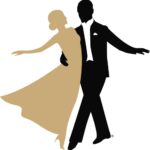Polka, with its lively steps and infectious rhythm, is more than just a fun social dance—it’s a celebration of culture and community.
From its humble beginnings in Eastern Europe to becoming a staple of ballroom dance floors worldwide, the polka has left a notable mark on social dance history. Let’s take a journey through time and explore the vibrant history of this joyful dance!
Origins of the Polka
The polka dance traces its roots to the Czech Republic, specifically the region of Bohemia, in the early 1830s. The name “polka” is derived from the Czech word pulka, meaning “half,” referring to the dance’s half-step movements.
This lively dance, characterized by its quick, upbeat tempo and playful steps, quickly became a popular folk tradition in that region. Early polka dances featured simple movements that could be enjoyed by dancers of all ages and skill levels, setting the stage for its future popularity.
The Spread Across Europe
Polka’s infectious energy couldn’t be contained within Bohemia for long. By 1835, the dance was a sensation in Prague’s ballrooms, captivating audiences with its lighthearted spirit.
Its charm soon caught the attention of Vienna’s elite in 1839, before sweeping across Europe to Paris in 1840, where it became a cultural phenomenon.
In France, polka took the Parisian ballroom scene by storm, blending seamlessly with the grand European dance traditions. Its lively pace and accessible steps made it a favorite at social gatherings, solidifying its place as a beloved social dance across the continent.
The Evolution of the Polka
As polka spread across Europe, it adapted to fit the styles and preferences of each region. In Germany, polka developed a more structured, formalized rhythm, while in Poland, it retained its folk dance roots with a lively and communal feel.
Scandinavian countries introduced their own unique flair, adjusting the tempo and incorporating traditional music styles. Over time, these regional variations led to the development of distinct versions of polka, showcasing the cultural diversity of the dance.
Polka in America
Polka made its way to the United States in the mid-19th century through Czech and German immigrants. The dance quickly found a home in the Midwest, where it became a cornerstone of cultural celebrations and social events.
As more communities embraced polka, it began to influence American folk music, merging traditional European sounds with emerging American styles. In states like Wisconsin and Minnesota, polka became a defining feature of local culture, celebrated in everything from community festivals to family gatherings.
Polka in the 20th Century
As social dance trends shifted in the 20th century, polka saw a decline in mainstream popularity. However, it remained a cherished tradition within ethnic communities across the United States.
The resilience of polka enthusiasts helped preserve the dance through the decades, leading to revival movements that rekindled interest in its history and cultural significance. Polka clubs, radio shows, and dedicated festivals emerged, keeping the spirit of the dance alive and well.
Polka in Present Times
Today, polka remains a vibrant part of regional traditions in certain communities. Annual festivals, such as the National Polka Festival in Texas and Oktoberfest celebrations across the Midwest, keep the dance alive.
Polka continues to evolve, blending with other dance styles and influencing contemporary social dances. Its enduring legacy is truly a testament to the joy it brings to people of all ages!
Learning Polka at Fred Astaire Dance Studios
The polka is not only a fun and energetic dance, but it also offers numerous physical and social benefits. At Fred Astaire Dance Studios, we believe everyone should have the chance to experience the joy of dancing.
Whether you’re looking to reconnect with your cultural roots, discover a new hobby, or simply enjoy a lively workout, our polka dance lessons are tailored for all skill levels. With two convenient locations in Carmel and Greenwood, our experienced instructors are ready to help you master the basic steps or refine your technique.
Ready to experience the freedom of dance? Sign up for your first lesson today and discover all that polka has to offer!

